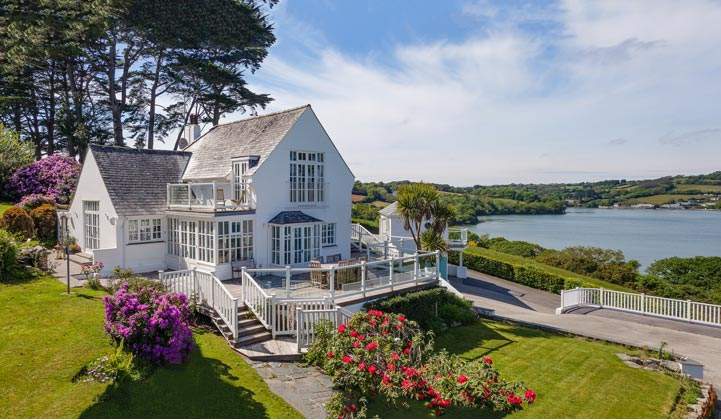Supply and demand nears equilibrium

Tranquil Waters, Falmouth, Cornwall (£2,500,000)
The exceptional performance of prime residential markets outside London is being driven by behavioural changes that are encouraging many buyers to trade up the housing ladder and others to reassess their work-life balance. The introduction of a stamp duty holiday has exacerbated this further and has added to the pent-up demand coming out of lockdown.
Consequently, in the prime markets outside London the number of £1 million-plus sales agreed over the past three months was more than double the level compared with the same period last year, outperforming the wider market, according to data provider TwentyCi.
The rapid surge in sales, however, is not being matched by subsequent increases in property prices across our prime regional markets. Prime values rose by a relatively modest 1.7% in the three months to the end of September – though this was the highest quarterly increase since March 2014. With annual growth of 2.6% compared with the same period in 2019, prime values outside London are now a marginal 1.4% above their 2007 peak.
As we look forward, while we are seeing a larger pool of buyers than at any time last year, they are in the enviable position of being able to choose from a wider selection of properties. We anticipate that this healthy alignment of supply and demand will keep prices stable and prevent the market from overheating. Although there may be uplifts in particularly desirable hotspots across the country, we see this trend persisting for some time.
Countryside and coastal hotspots
Looking closer at the prime market performance, the biggest rise in values was in the rarefied £2 million+ country house market, due to a resurgence of interest post lockdown. Here, values increased quarterly by 3.4%, led by the southern regions of England and also Scotland. Despite the quarterly price growth, values in this submarket remain on average 18.7% below the peak of 2007.
Meanwhile, coastal hotspots, including Suffolk in the East of England and Devon and Dorset in the South West, have witnessed a quarterly 2.9% rise in values, as a desire for lifestyle change led to strong competition in this part of the market.
Elsewhere, a desire for space has caused homeowners in central London to look to outer London locations and beyond. Consequently, prime values in suburban locations saw a 4.0% annual rise, led by areas within easy reach of the capital such as Loughton in Essex, where prime values are 8.2% higher compared to last year.
In general, the price gap between properties in urban and surrounding areas continues to narrow as buyers consider life in the countryside. That said, some of the strongest quarterly uplift in prime values was seen in York (6.1%) and Glasgow (4.1%) where supply remains constrained. Across the regions, however, there was no discernible change in values for flatted properties, particularly for those that lack access to outdoor space.
Outlook
We predict a particularly active prime market over the next six months, fuelled by buyers in search of homes and communities that offer sanctuary and space. Given the factors impacting the market – from increasing supply levels to the bottleneck of exchanges developing as the end of the stamp duty holiday grows nearer – it is essential that both buyers and sellers remain pragmatic if the current levels of activity in the market are to be sustained. Economic uncertainty and further restrictions due to Covid-19 are likely to necessitate this.
Looking to the future, we can take encouragement from the fact that, although there appears to be pent-up demand for prime property from international buyers awaiting an easing in travel restrictions, the surge in sales has relied on domestic buyers. Furthermore, a prolonged period of ultra-low interest rates should support pricing over the medium term.
The performance in 2021 will depend on the state of the economic recovery at the point the stamp duty holiday ends, the progress that has been made in the search for a Covid-19 vaccine and the prospects for a reduction in unemployment levels over the course of the year.
Definition of prime property This market consists of the most desirable and aspirational property by location, aesthetics, standards of accommodation and value. Typically, it comprises properties in the top 5% of the market by house price.
Interested in other areas of the UK?
View all of our latest prime Market in Minutes research here.
